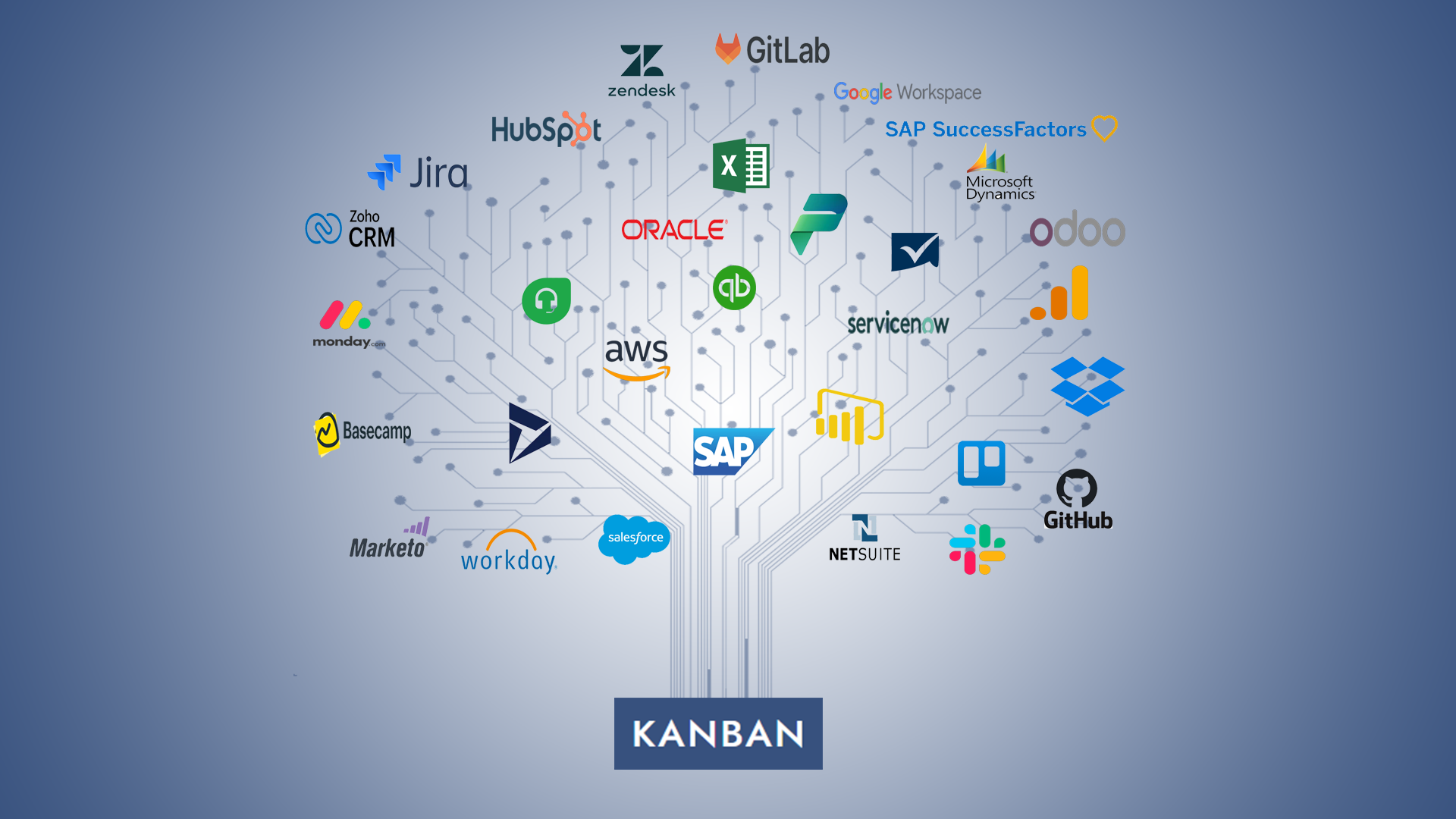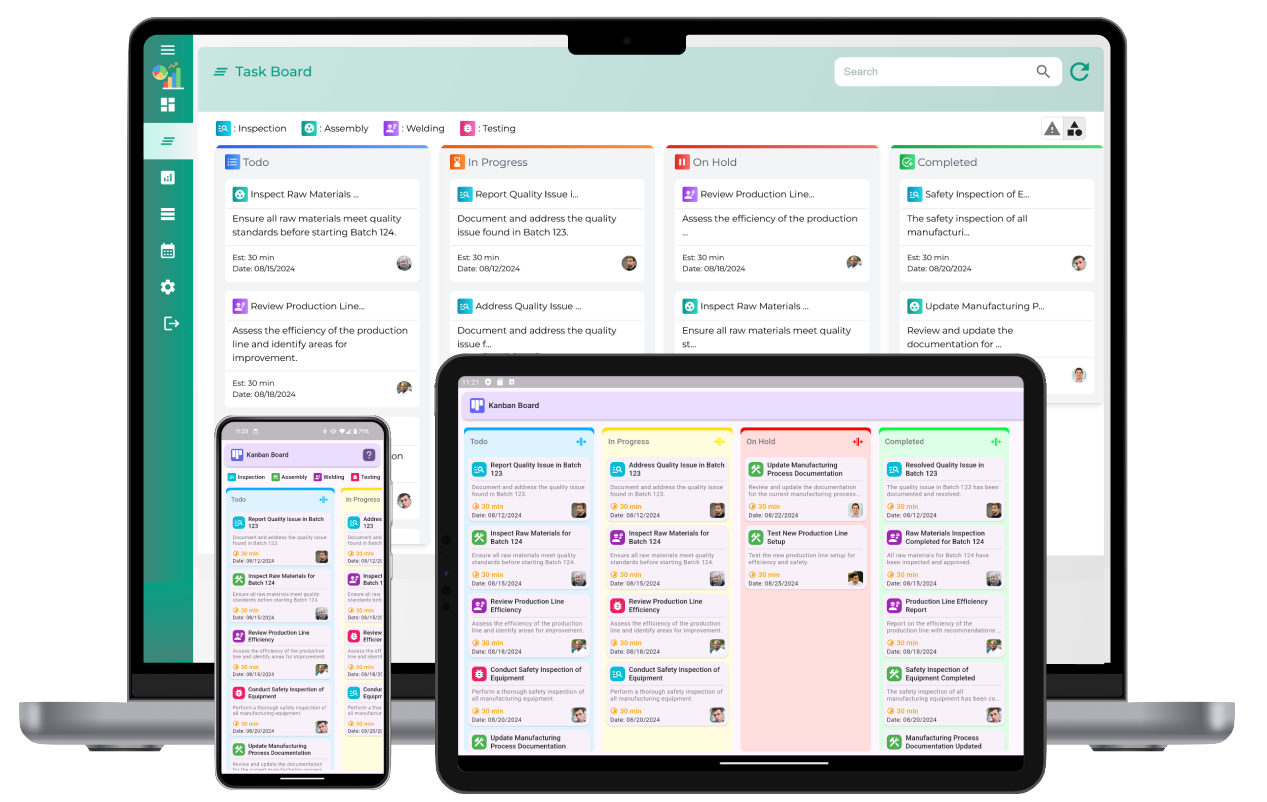Effective workflow management and process optimization are essential for operational efficiency. By integrating Kanban board software with SAP, organizations can enhance visibility, streamline task management, and drive continuous improvement. This integration allows businesses to combine the structured approach of SAP with the visual management capabilities of Kanban, creating a more agile and responsive work environment.

What is Kanban Board Software?
Kanban board software is a visual tool used for managing tasks, workflows, and projects. It consists of a board divided into columns that represent different stages of a process. Tasks, represented by cards, move across the board as they progress through the workflow. This method enhances transparency, helps teams prioritize tasks, and eliminates bottlenecks.
Key Features of Kanban Board Software
1. Visual Workflow Management
Kanban boards provide a clear, real-time overview of ongoing tasks, helping teams monitor progress and identify bottlenecks.
2. Task Prioritization
Tasks can be categorized based on priority, deadlines, and assigned team members, ensuring a structured approach to work execution.

3. Work-in-Progress Limits
To prevent overload, Kanban boards allow for setting limits on tasks in progress, ensuring a balanced workload and continuous flow.
4. Real-Time Collaboration
Team members can update tasks, add comments, and attach documents, fostering collaboration and improving communication.
5. Performance Metrics
Dashboards provide insights into task completion times, bottlenecks, and efficiency, helping teams optimize workflows.
How SAP Integrates with Kanban Board Software
Integrating SAP with Kanban board software enhances process automation, real-time data synchronization, and operational efficiency. This integration allows users to bridge structured ERP processes with flexible task management systems.
1. Automated Task Updates
When a process stage changes in SAP, corresponding Kanban board tasks can be updated automatically. This eliminates manual data entry and ensures accuracy.
2. Seamless Data Exchange
Business data such as order statuses, inventory levels, and project milestones are synchronized between SAP and the Kanban board, enabling real-time decision-making.
3. Enhanced Workflow Visibility
Managers and teams gain a unified view of operations, as SAP data is visually represented on the Kanban board, improving transparency.
4. Automated Notifications and Alerts
Users receive automated notifications for pending approvals, completed tasks, or urgent actions required, ensuring workflow continuity.
5. Integrated Reporting
By merging SAP analytics with Kanban board performance data, businesses can generate comprehensive reports for process optimization.
Benefits of Integrating SAP with Kanban Board Software
1. Improved Efficiency
Automation reduces manual effort, speeds up task execution, and minimizes errors, improving overall efficiency.
2. Enhanced Collaboration
Teams across departments can work together seamlessly, as SAP and Kanban integration ensures everyone is aligned on task progress.
3. Real-Time Decision-Making
Live data updates enable managers to make informed decisions, reducing response times and improving agility.
4. Greater Flexibility
Kanban boards introduce agility into traditionally structured SAP workflows, allowing for faster adaptations to changing priorities.
5. Reduced Bottlenecks
By visually identifying process slowdowns, teams can quickly resolve inefficiencies and maintain a continuous workflow.
Common Use Cases of SAP and Kanban Integration
1. Supply Chain and Inventory Management
Kanban boards track stock levels, replenishment cycles, and supplier orders while syncing with SAP to maintain accurate inventory records.
2. Production Planning
Manufacturing teams visualize production stages on the Kanban board while SAP handles resource allocation and scheduling.
3. Sales Order Processing
Customer orders move through various stages on the Kanban board, with real-time status updates reflecting in SAP.
4. IT Service Management
Support tickets and change requests are tracked on the Kanban board, while SAP manages asset and service records.
5. Project Management
Teams track project progress using Kanban while SAP ensures financial and resource planning remains accurate.
Steps to Implement SAP and Kanban Board Integration
1. Identify Business Needs
Define the processes that will benefit most from Kanban visualization and SAP integration.
2. Configure Workflows
Map SAP process stages to corresponding Kanban board columns for seamless data synchronization.
3. Establish Data Sync Rules
Determine which SAP records should trigger updates on the Kanban board and vice versa.
4. Test and Optimize
Run pilot tests to ensure smooth data exchange, validate accuracy, and refine workflows as needed.
5. Monitor and Improve
Use performance metrics and feedback to continuously improve the integration for better efficiency.
SAP Integrates with Kanban Board Software
What is Kanban Board Software?
Kanban Board Software is a visual workflow management tool that helps teams track tasks, manage inventory, and optimize production flow using a board-based system.
How does SAP integrate with Kanban Board Software?
SAP integrates with Kanban through automated workflows, real-time data exchange, and visual task tracking, ensuring seamless inventory and production management.
What are the benefits of integrating SAP with Kanban?
Benefits include improved efficiency, reduced manual work, automated inventory replenishment, enhanced task tracking, and better production scheduling.
Can SAP Kanban integration improve inventory management?
Yes, SAP Kanban ensures accurate stock levels by automating material replenishment and reducing overstock or shortages.
How does SAP Kanban support real-time workflow tracking?
By integrating with SAP, Kanban provides real-time updates on task progress, inventory status, and work orders, ensuring smooth operations.
What industries benefit from SAP Kanban integration?
Industries such as manufacturing, logistics, healthcare, and supply chain management benefit from real-time task and inventory control.
Does SAP Kanban integration support automated replenishment?
Yes, SAP Kanban can trigger automatic material requests based on real-time consumption data, ensuring a continuous supply.
How does SAP Kanban enhance supply chain management?
It improves demand forecasting, optimizes stock levels, and enables just-in-time production, reducing waste and improving efficiency.
Can SAP Kanban be used for production planning?
Yes, SAP Kanban helps manufacturers manage production tasks, track work orders, and align resources efficiently.
Does SAP Kanban integration work with cloud-based systems?
Yes, it supports cloud and on-premise deployments, offering flexibility and scalability for businesses.
How does SAP Kanban improve task visibility?
Kanban boards provide a clear visual representation of work progress, allowing teams to track pending, in-progress, and completed tasks.
What reporting features are available in SAP Kanban?
It offers real-time analytics, workflow tracking, and performance dashboards to measure process efficiency and identify bottlenecks.
Can SAP Kanban be customized for different workflows?
Yes, SAP Kanban allows workflow customization to align with specific business processes and industry requirements.
How does SAP Kanban help in lean manufacturing?
It eliminates waste, optimizes resource allocation, and ensures a smooth workflow, supporting lean production principles.
What are the key features of SAP Kanban integration?
Key features include real-time tracking, automation, cloud compatibility, workflow customization, and analytics-driven insights.